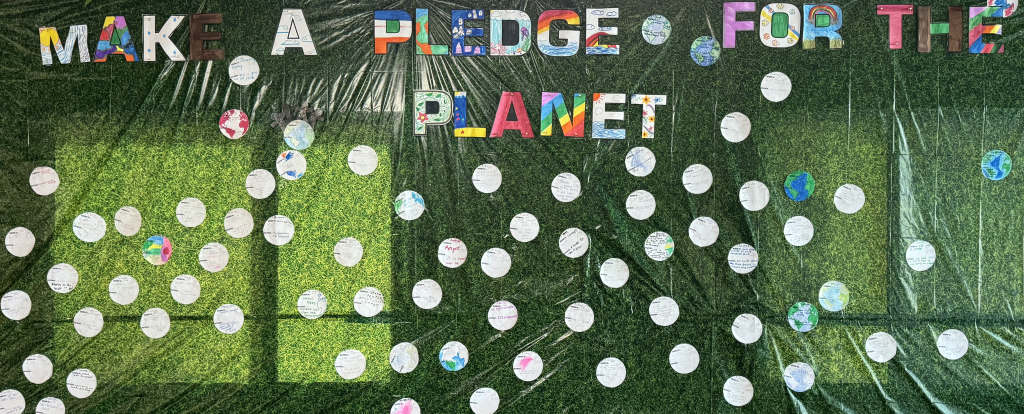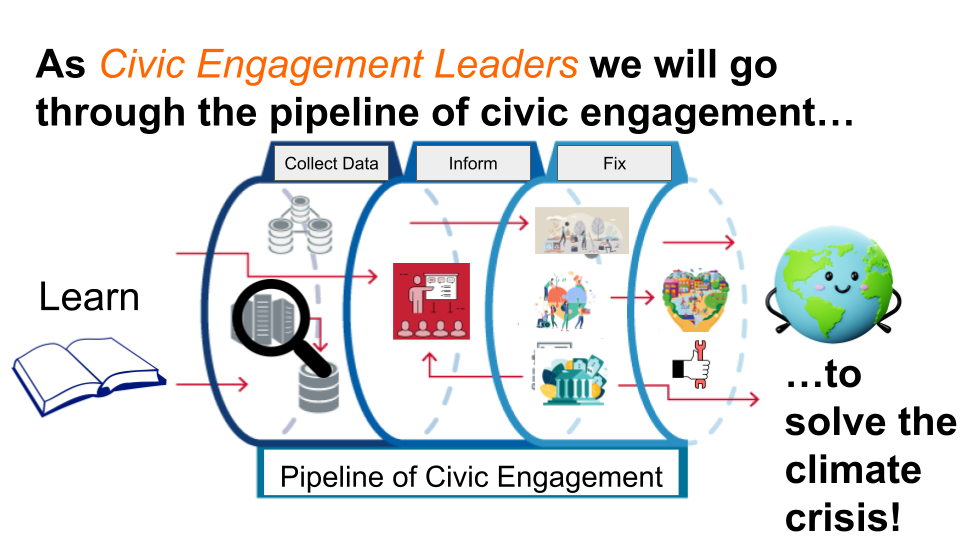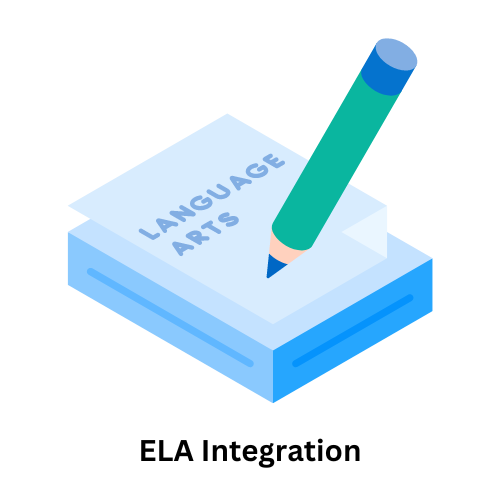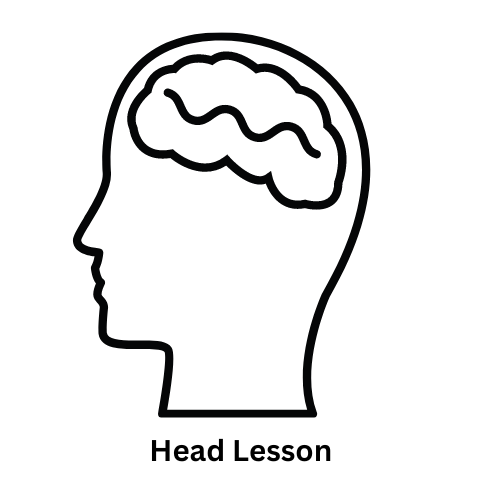Designed to help your students save the world.
Jump to the Lesson Sequence

Why Create a Climate Empowerment Curriculum?
Objectives:
The Climate Empowerment Curriculum sets forth to do the following:
- Teach students about the science underlying climate change using engaging and hands-on modes of learning.
- Foster the development of students’ climate activist identity.
- Emphasize the dire situation of the climate crisis without inducing climate anxiety.
- Feel relevant to students and provide opportunities for them to develop their own interests and skills.
- Create the space for students to feel they have made a tangible difference in mitigating their or their communities contribution to climate change.
- Encourage families and communities to learn about climate change and mitigate their impact.
- Integrate the development of standards aligned skills and knowledge with climate change education.
- Provide tools that are easily accessible and usable by teachers.
- Be readily adaptable to a diversity of classroom contexts.
Balancing Climate Urgency with Climate Anxiety
Climate change is one of our world's preeminent challenges. The need to act is urgent to prevent irreversible damage (IPCC, 2023). Students must understand the impending crisis to prepare for it and be part of implementing solutions. A challenge that my colleagues and I have faced when teaching climate change is conveying the seriousness and urgency of the crisis without overwhelming students to the point of despair.
This project is meant to address that challenge by cultivating students’ climate activist identity. A climate activist identity encourages a sense of agency, so students feel like they can do something about the crisis. This curriculum fosters a climate activist identity by empowering students to engage in their own climate action project. Engaging in a climate action project and developing a climate activist identity not only helps students overcome the negative impact of climate anxiety (Collier, 2022) but has a number of other benefits such as: motivating student interest in the discipline of climate science, providing a sense of achievement in taking a concrete action, teaching 21st century skills skills, and encouraging others in the community to take part in climate solutions.
Standard Aligned Curriculum
Traditional classroom teachers who want to teach about the climate crisis inevitably face a challenge of balancing time spent on climate education with time on required content standards. The curriculum therefore undertakes to embed climate action education within lessons that teach grade level standards. Because teaching about the climate crisis can be an engaging topic for students, embedding standards within the unit allows teachers to leverage student interest to teach requisite skills and content knowledge.
Curriculum Overview and Guide
There are three strands of the Climate Empowerment curriculum:

Weaving the Strands or Stand Alone Units
Weaving
The best way for students to experience the curriculum is for the curricular strands to be woven together. In this framework students are engaging in, and working on their Climate Empowerment Project concurrent to learning about what climate change is and how it works. The reason for having this intertwined curricular approach is threefold:
- It allows for the time necessary for students to develop, document and take significant action.
- The learning that students are doing can be actively embedded into the project that they are creating, which makes the content knowledge students are learning feel relevant.
- Learning about the scale of the crisis will feel less overwhelming to students because they perceive the actions that they are taking as making a difference.
Stand Alone Units
Even though weaving the three curricular strands together might be ideal, time constraints or other factors require teachers to adapt the sequencing of the curriculum. As such the three strands of the Climate Empowerment curriculum can each be taught as independently as separate units.
For example:
- A teacher might choose to teach the strands sequentially by having students first learn about the cause and effect of climate change. They could then dive into how climate change impacts wildfires and then finally have their students use the knowledge that they learned to develop a capstone climate empowerment project. (This approach is the most straightforward and is presented below as the Sequential Sequence.)
- Another teacher might feel that students already possess the knowledge in the introductory strand and therefore choose to bypass the first strand and instead weave together units 2 and 3.
- A final teacher of a discipline other-than science may wish to utilize only the Climate Empowerment Project resources and leave the first two strands to another teacher.
Ultimately teachers know their students better than any and should adapt this curriculum to best fit their needs. Teachers who are interested in teaching the units separately, should make use of the Sequential Sequence below.
Pedagogy and Integration
Heart, Head, Hands
The Heart-Head-Hand approach is a framework developed by the Climate Empowerment Learning Initiative (CELI) and builds upon the he Head-Heart-Hands approach (e.g., Sipos 2008). The core of the practice is to develop an all encompassing approach to developing a climate identity that results in action. CELI has modified the original to start with the heart because students are hooked and driven to learning by emotional resonance with the issue (Harris et al., 2024). They then learn the key concepts through "head lessons" that gives them the tools they need to act (through the hands). Heart, Head and Hands lessons are readily identified in each lesson plan through the symbols depicted below:
Content Integration
Climate science is inherently interdisciplinary, and solutions to the crisis will require a multimodal approach. The Climate Empowerment Curriculum makes space for students to develop disciplinary skills beyond science. When non-science disciplinary skills are integrated into the lessons they are demarcated by the following symbols:
Civic Engagement Model TO USE WITH THE CURRICULUM
The Pipeline of Civic Engagement, is a model developed for Science Partnership for Global Change Education (SPGCE). Pictured below, it describes the steps necessary to undertake a major collective civic action such as solving the climate crisis.
- In order to get to solutions, it is first necessary to learn about the problem.
- The scientific process is one of humanity’s best approaches to identify problems which involves collecting and analyzing data.
- Once the problems and solutions to them have been identified, the next step is to inform others about the nature of the problem and create the collective will to tackle it.
- Finally it will be possible to implement solutions to fix the crisis.
The pipeline is not strictly linear, sometimes attempts to inform or fix drive a need for more learning. However the model does suggest that in order to get to the final "fix" stage, learning about and informing others of the problem is strictly necessary.
The purpose of this curriculum is to take students through the pipeline from learning about climate change, to informing others, to being part of the solution.

Learn More About Climate Change
Learn more about climate change by browsing this site's Content Resource Collection, a curation of multi-modal media that explores what climate change is, what its impacts are, and how to address it.
Discourse Tools to Use with The Curriculum
The Climate Empowerment Curriculum emphasizes student discourse as a powerful tool for students to process information and generate ideas. Linked here is a document with common discourse strategies to use in science classes, collated by Nancy Wright of Hayward Unified School District. Throughout the curriculum there are places where such discourse strategies should be integrated. More discourse strategies can be found at teachertooklit.com and facinghistory.org.
Lesson Sequence
Two lesson sequence options are outlined below, one with the strands as separate individual units, and the other with the strands woven together.
Sequential Sequence
In this sequence, the three strands are presented sequentially in the order of 1. Introduction to Climate Change – Causes and Effects 2. Special Topics in Climate Impact – Wildfires 3. Climate Empowerment Project
Introduction to Climate Change – Causes and Effects
Strand One
Lesson Name and Link | Lesson Plan Status | Lesson Components |
1 |  Complete |    - Nature Journaling - Preassessment |
2 |  Complete |   - Climate Impact Casestudies |
3 |  In Development |   - Collecting Data - Graphing |
4 |  In Development |   - Analyzing Data - Making Sense of Patterns |
5 |  In Development - Activities and Slideshow linked |   - Graphing - Analyzing Data - Understanding Trends |
6 |  complete |   - Making observations and measurements - Collecting and Analysing Data - Conservation of Matter |
7 |  complete |  - Building Models - Molecular Nature of Matter - Analysing Data - Chemical Reactions |
8 |  In Development |  - Building Models - Balancing Chemical Equations - Molecular Nature of Matter - Chemical Reactions |
9 |  In Development |  - Applying Models to Real World - Work (Physics Concept) |
10 |  In Development - Activities and Slideshow linked |   - Graphing - Analyzing Data - Understanding Trends - Introduction to Photosynthesis |
11 |  In Development |   - Making observations and measurements - Collecting and Analysing Data - Greenhouse Effect - Making Models |
12 |  complete |  - Cause and Effect - Making Models - Assessment and Review |
Special Topics in Climate Impact – Wildfires
Strand 2
Lesson Name and Link | Lesson Plan Status | Lesson Components |
* | Since many of the lessons in the wildfire strand are incomplete at this time, this overview provides more details about the activities linked below flow together to use while the full lessons are in development |  |
13 |  A complete lesson plan developed by Hayward Unified School District's SEL department is available. |  - Social Emotional Learning |
14 |  In Development - Activities and Slideshow linked in Wildfire Strand Overview |    - Analysing Multi-Modal Data - California History Connection |
15 |  In Development - Slideshow linked in Wildfire Strand Overview |  - Cause and Effect - Chemical Reactions |
16 |  In Development - Activities and Slideshow linked in Wildfire Strand Overview |   - Making observations and measurements - Collecting and Analysing Data - Making Claims Based on Evidence |
17 |  Resources Linked in Wildfire Strand Overview |   - Succession - Civic Connection - Equity Focus -Ecosystems |
18 |  complete |   - Summative 3-D Assesment |
19 |  In Development - Activities Student Work Linked in Wildfire Strand Overview |   - Summative Assessment - Fire Preparedness |
Climate Empowerment Project
Strand 3
Lesson Name and Link | Lesson Plan Status | Lesson Components |
20 |  Complete |    - Gallery Walk - SEL Integration - Reflection |
21 |  In Development |   - Calculating Carbon Footprint |
22 |  Complete |  - SEL Integration - Connecting to Self |
23 |  Complete |   - Time Management - Prioritization - Community Engagement |
24 |  Complete |  - Logging Progress - Time Management - Prioritization |
25 |  In Development - Student work samples linked |  - Practicing for Exhibitions -Community Engagement -Assessing Student Projects |
Woven Sequence
In this sequence, the three strands are woven together. In the left column, strands one and two are reordered for a more cohesive lesson progression (though note the original lesson number was retained). The right column contains most of the action project lessons from strand three paired with the approximate lesson that teachers should introduce that section of the project with the lessons from strand one and two.
Threads 1 & 2 Lessons and Lesson Number (Numbers are not in the order of the Sequential Sequence) | Thread 3 Project Lessons |
1 | |
2 | 20 |
3  In Development | |
4  | |
5  In Development | 22 |
13  A complete lesson plan developed by Hayward Unified School District's SEL department is available. | |
14  In Development - Activities and Slideshow linked in Wildfire Strand Overview | 23 |
6 | 24 Part 1 |
7 | 24 Part 2 |
8  In Development | 24 Part 3 |
9  In Development | 24 Part 4 |
10  In Development - Activities and Slideshow linked | 24 Part 5 |
11  In Development | 24 Part 6 |
21  In Development | |
15  In Development - Activities and Slideshow linked in Wildfire Strand Overview | 24 Part 7 |
16  In Development - Activities and Slideshow linked in Wildfire Strand Overview | 24 Part 8 |
17  In Development - Activities and Slideshow linked in Wildfire Strand Overview | |
12 | |
18 In Development - Activities and Slideshow linked in Wildfire Strand Overview  | |
19  In Development - Activities and Slideshow linked in Wildfire Strand Overview | 25  In Development - Student work samples linked |






